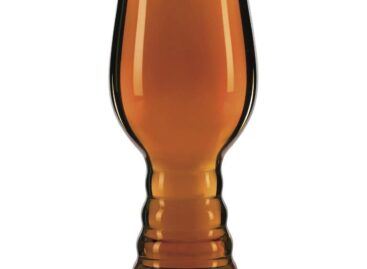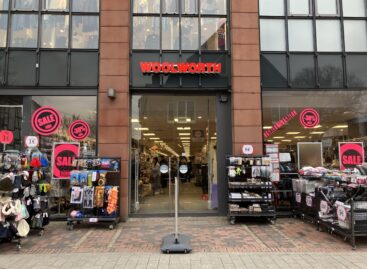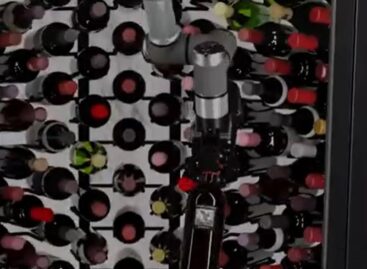As the old joke goes: first melon and then beer?
Although beer consumption has been declining in Hungary in recent years, quality has become important and consumers can choose from a large selection of products.
This article is available for reading in Trade magazin 2025/6-7.
This is mainly the result of dedicated work by small and medium-sized breweries. At the same time the phenomenon known as the beer revolution has calmed down in Hungary too. Multinational have slowed down the advance of small breweries by improving average quality and developing new products.

The primary target group of kraft beers is Generation Y
They left a visible mark

Béla Bukovinszky
executive director
Szent András Brewery
“The craft beer market is only a part of the small-scale market. By “craft” I mean innovative breweries with corresponding beer types: IPA, porter, stout, sour and the like. The hype surrounding craft beers seems to be fading. Accordingly, the market share of these has been stagnating at no more than 3% for years. However, the scene has left a visible mark on the market in terms of consumer perception, and today there is no self-respecting shop or catering establishment that doesn’t include domestic craft beer in its product selection”,
says Béla Bukovinszky, executive director of Szent András Brewery.
Szent András has had an alcohol-free product range called Majdnem since 2023, which will be expanded with a Belgian-style wheat beer. Their gluten-free beer line GlutéNO will soon welcome its first sour cherry variant.
The value of shopping baskets has decreased

Csaba Halgas
owner
HopTop Sörfőző
“The craft beer market keeps changing and has transformed a lot over the past year and a half. Although domestic shelf prices are low by international standards, Hungarian consumption habits and price-sensitivity haven’t helped sales growth. The consumer base has expanded, but the number of purchases per capita and the value of the shopping basket have decreased”,
emphasises Csaba Halgas, owner of HopTop Sörfőző Zrt.
HopTop offers traditional Hungarian-made lager beers for men over 40 at competitive prices. They target men aged 30-40 with barrel-aged beers and sour beers with a tangy taste, while for younger consumers they brew low-alcohol, easier-to-drink milkshake IPAs and fruit-enriched versions.
Generation Y and its role

Tamás Szilágyi
founding owner
Mad Scientist Brewery
“There seems to be a global trend of Generation Z drinking less alcohol. This is relevant because a large part of the preceding Generation Y is now in the midst of starting families and raising young children, so they have given up the weekly beer drinking. If I had to guess I would say that 60% of our customers belong to Generation Y, 20% is Generation X and 15% is Generation Z”,
explains Tamás Szilágyi, founder and owner of Mad Scientist Brewery.
The company now also has tonics, ginger ales and a mate tea-based product range. Their most exciting project to date is a collaboration with the Rick and Morty series.
Important innovative products

Gergely Marton
plant manager
The Beertailor
“We have noticed that even if beer consumption has declined in Hungary over the past two years and the market share of small breweries is still low, consumers are looking for quality products. This also has to do with the fact that the price difference between mainstream and premium beers became smaller after Covid, so more conscious consumers are turning to quality instead of quantity”,
we learn from Gergely Marton, plant manager of The Beertailor.
The rise of innovative products and the interest from younger generations are contributing a lot to the strengthening of craft beers on the market. In addition to the company’s Beertailor and Beerka beers, they have come out with a new seasonal craft lemonade in cans, available in three fruit flavours.

What the beer revolution has achieved remains irrevocably with us
Fewer products to choose from in retail

Dániel Fáczán
sales director
Liquid Gold
“The pandemic and elevating energy prices haven’t been good for the craft beer market. Our experience is that several retailers reduced their craft beer offering, because they found these products difficult to sell due to higher prices. Sales in the HoReCa sector are perhaps a little better, but we don’t see bigger interest in craft beers than before. Our company’s selection of non-alcoholic beers includes Bitburger 0.0, Clausthaler and the isotonic Erdinger Alkoholfrei. This year we started distributing DAB Zero 0.0 and we are planning to introduce new beer mixes”,
says Dániel Fáczán, sales director of Liquid Gold Kft.
Czech craft beers and Czech culture

Miklós Orvos
owner
Czech-Hungarian Trading
“It seems that – just like in other countries – the number of craft beer enthusiasts has stabilised in Hungary. We are in the fortunate position of having fans of Czech beers in our target group. Everyone is important to us who sees beer as more than just alcohol, who is open to new and special products, and who is interested in beer, culinary culture and the Czech Republic”,
reports Miklós Orvos, owner of Czech-Hungarian Trading Kft.
The company has non-alcoholic beers and in the summer they also offer a large selection of light fruity beers. There are excellent gluten-free beers in the portfolio and in the free-from category they offer a variety of waters flavoured with different hops.
You have to fight for every beer tap
According to Péter Starcsevics, president of the Association of Small-scale Breweries (KSE), the primary obstacle to the spread of small-scale beers is that the regulations commonly referred to as the “beer law” don’t work.

Péter Starcsevics
president
Association of Small-scale Breweries
“According to the intention of the legislator, bars and restaurants with a contract with a large brewery are required to keep beers from a small-scale brewery on tap at all times, but this is hardly ever checked.
Experience from the past decades has shown that a fair market environment can’t emerge, because certain market players are abusing their dominant positions.
Despite consumer demand, small-scale draught beer isn’t available in most places, even though a survey conducted by the Hungarian Competition Authority (GVH) has found that two-thirds of consumers would be happy to drink small-scale beer in restaurants and bars if it was available”, explains KSE’s president.
The end of the beer revolution
According to beer writer György Vétek, the beer revolution has come to an end – both in terms of quantity and quality – but its achievements will remain with us forever.

György Vétek
beer writer
The beer revolution began in the United States in 1965 and Europe joined the “movement” in the 1990s, with the Czech Republic and Hungary following in the first decade after the turn of the millennium.
This spectacular phase of the beer revolution was characterised by a rapid increase in the number of small breweries, an extremely wide range of beers, new hop varieties and the emergence of new types of beer. But this momentum has only lasted until now.
The heroes of the beer revolution have become part of the system or stopped brewing beer.
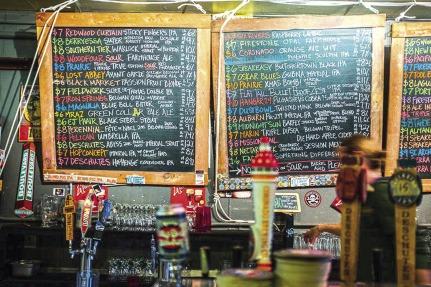
Consumers can choose from an incredibly wide selection
Small-scale breweries are now an important part of a market that used to be dominated by large breweries. New beers appear on a weekly or monthly basis in Hungary too, and we can choose from an incredibly diverse product selection. Small breweries forced the big players to broaden their portfolios and care about more sophisticated beer lovers too. For a healthy beer market both segments – large and small – are necessary. In addition to these, there is a third segment that is unfortunately missing in Hungary, namely medium-sized regional breweries with a capacity of 50,000-100,000 hectolitres per year, capable of supplying two or three counties with decent beer.
Beer names
In Europe there are 9,700 small and large breweries and distributors, plus in the US there are another 3,000, producing tens of thousands of different products, all of which need to be named.
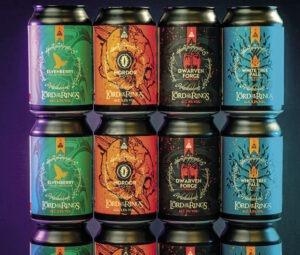
The naming of the Mad Scientist Lord of the Rings series is examplary
What makes a good beer name? If the beer tastes unusual, it is just normal that its name should be unusual too. Beer names aren’t just attention-grabbing marketing tools: they connect the consumer with the product at an emotional level and enhance the consumer experience. There are several basic principles for successful beer names – arousing curiosity: Gentle Bastard; emotional impact: Midnight Express; strengthening brand identity: Balaton IPA; increasing perceived value: More Nectar
Related news
Hungary’s craft breweries
🎧 Hallgasd a cikket: Lejátszás Szünet Folytatás Leállítás Nyelv: Auto…
Read more >Non-food discounters target Central Europe
🎧 Hallgasd a cikket: Lejátszás Szünet Folytatás Leállítás Nyelv: Auto…
Read more >Rudolf Semsei: “Those guests are also regulars who come to us just once a year”
🎧 Hallgasd a cikket: Lejátszás Szünet Folytatás Leállítás Nyelv: Auto…
Read more >Related news
Intuition can’t be learned
🎧 Hallgasd a cikket: Lejátszás Szünet Folytatás Leállítás Nyelv: Auto…
Read more >(HU) Palackosbor-vending – A nap videója
🎧 Hallgasd a cikket: Lejátszás Szünet Folytatás Leállítás Nyelv: Auto…
Read more >(HU) A lázadók kilőtték a Halálcsillagot – A nap képe
🎧 Hallgasd a cikket: Lejátszás Szünet Folytatás Leállítás Nyelv: Auto…
Read more >
